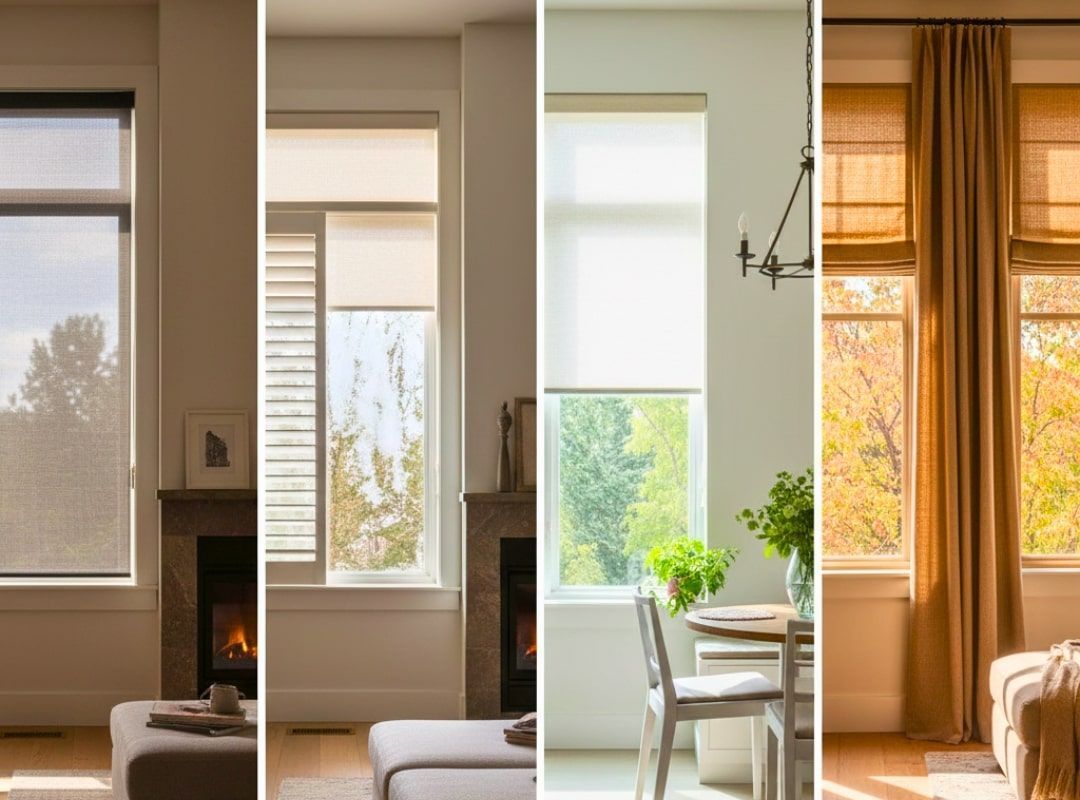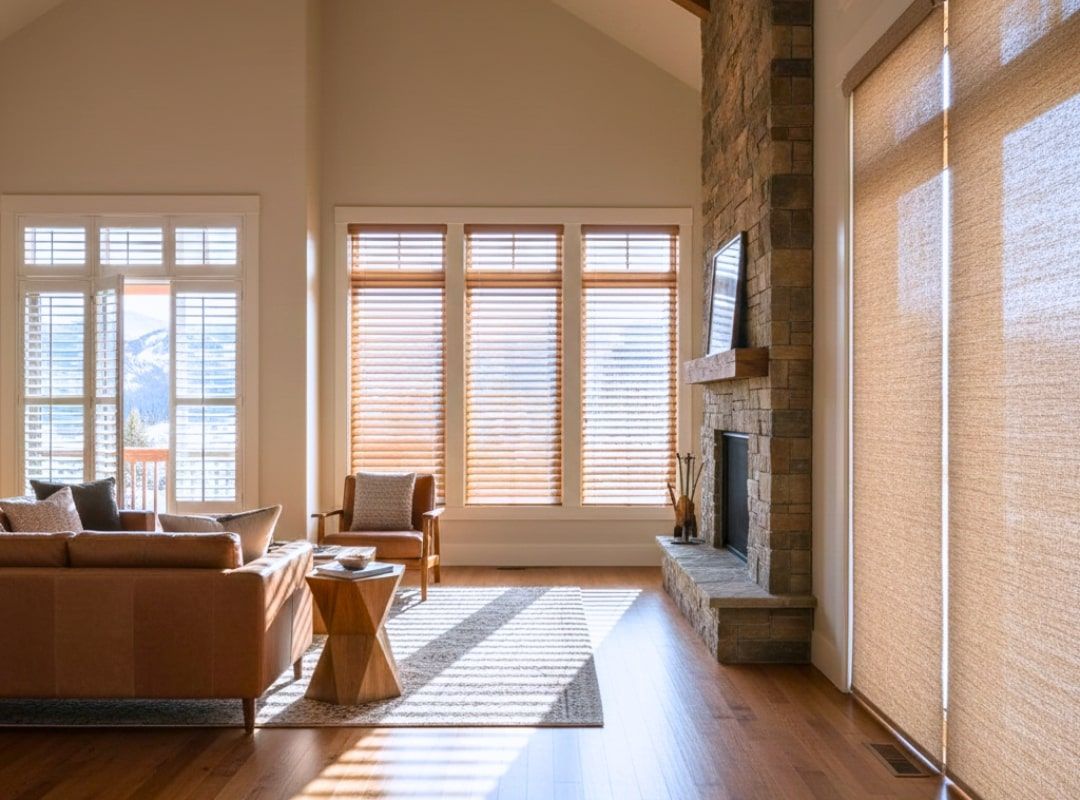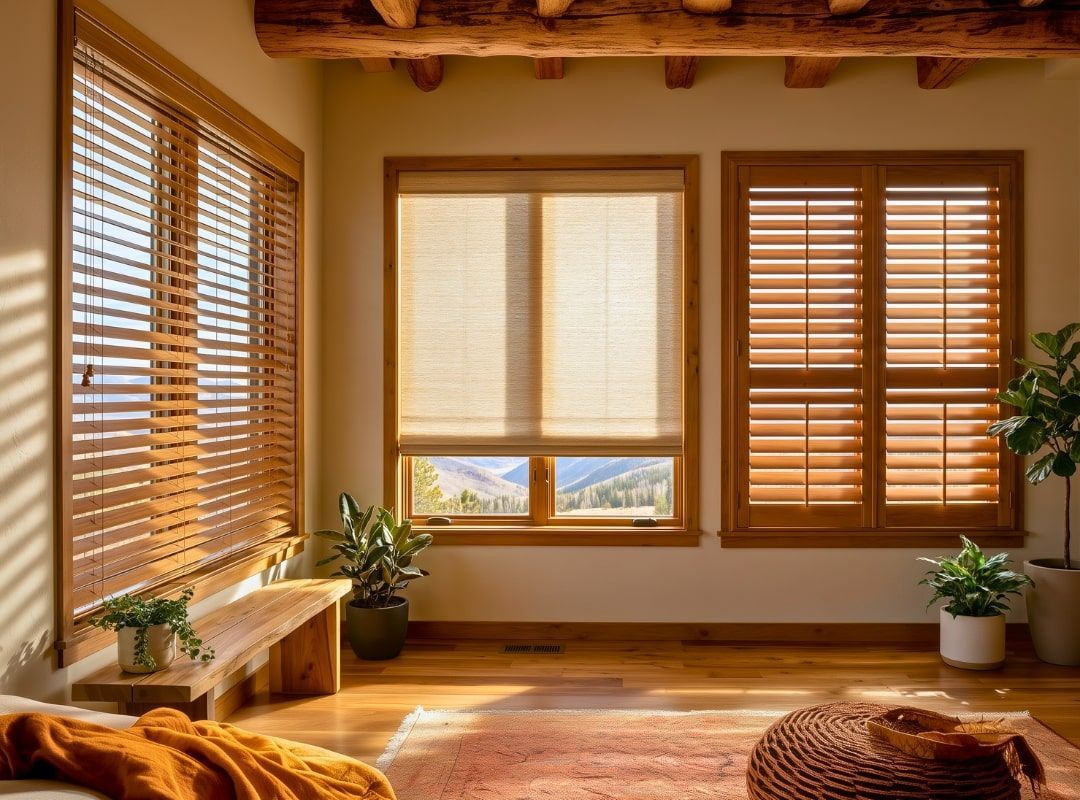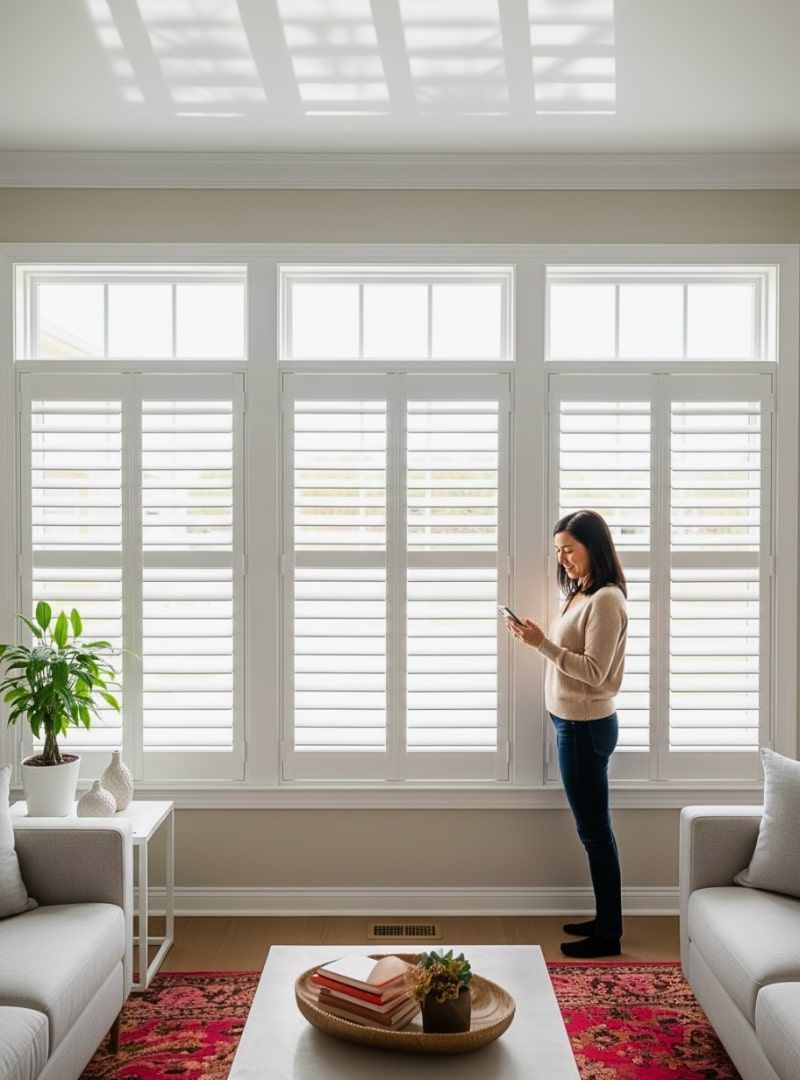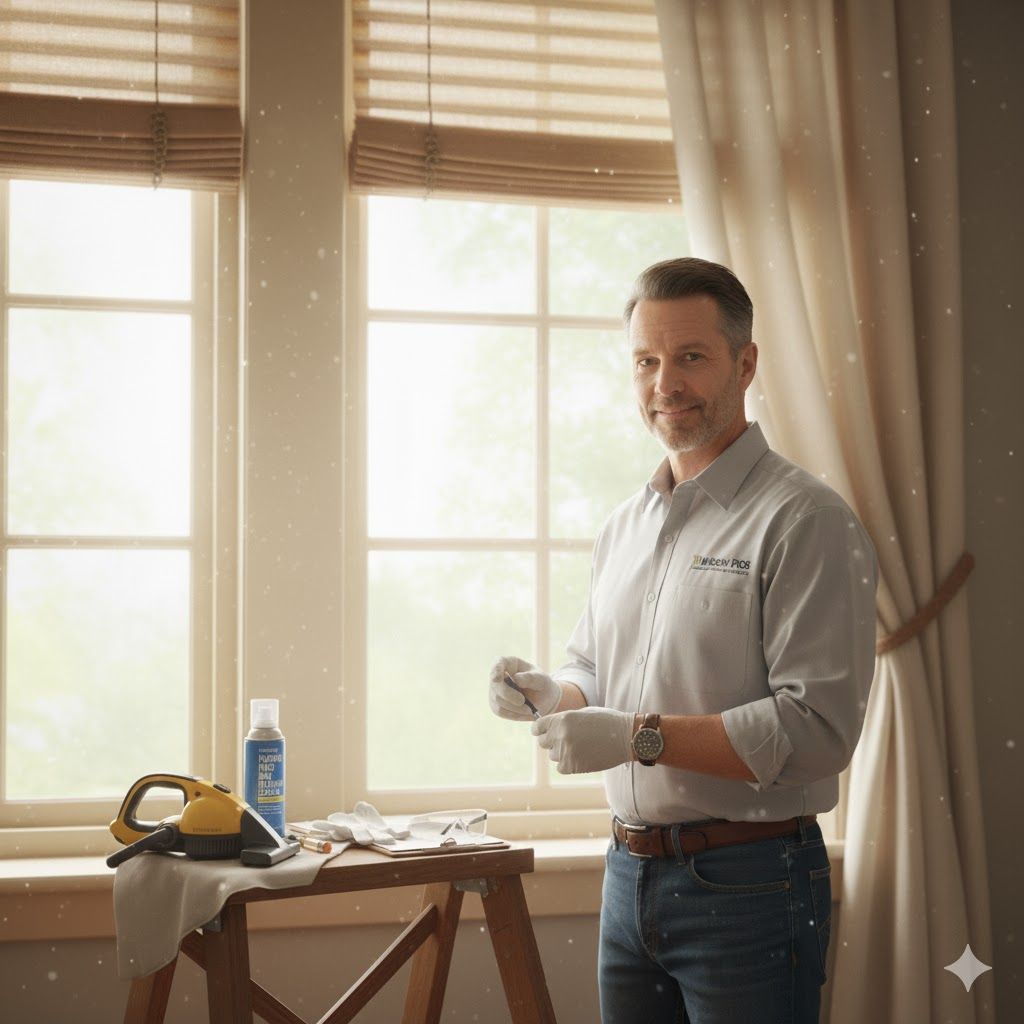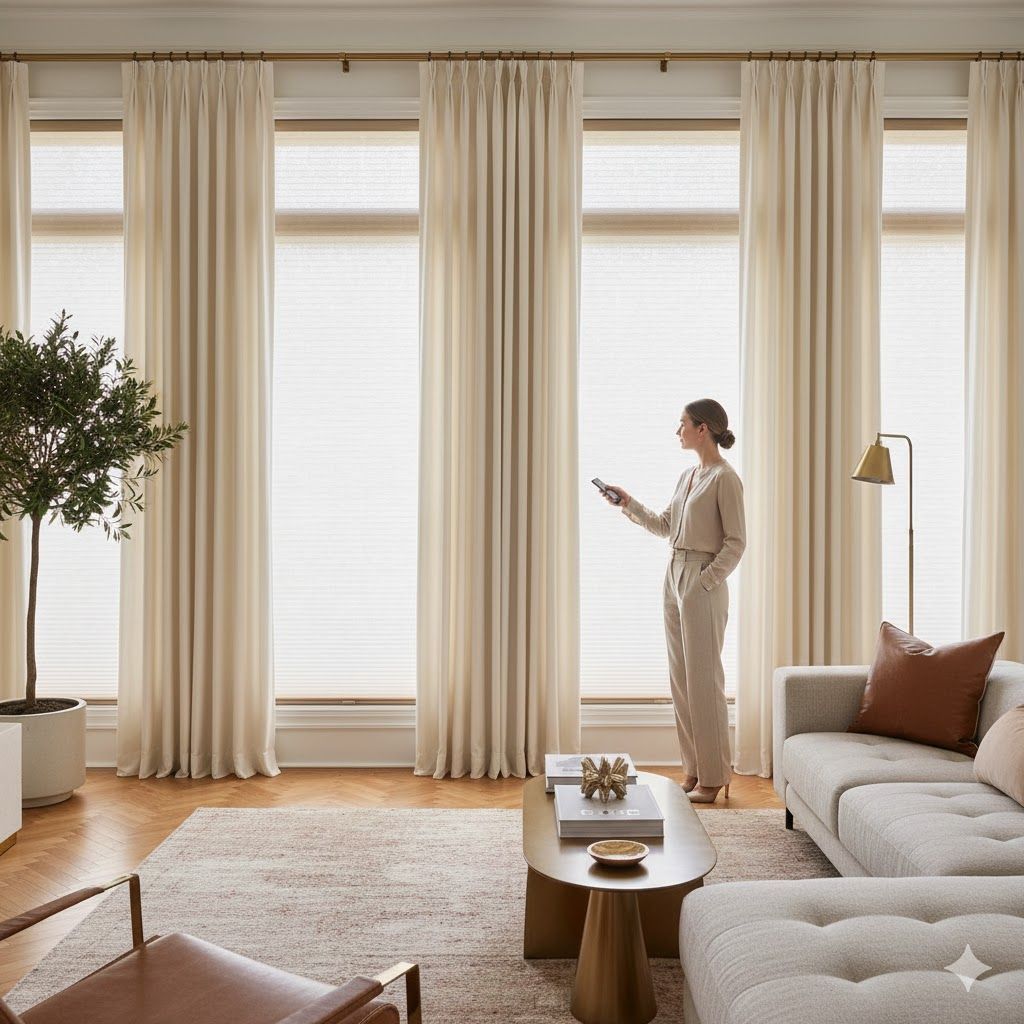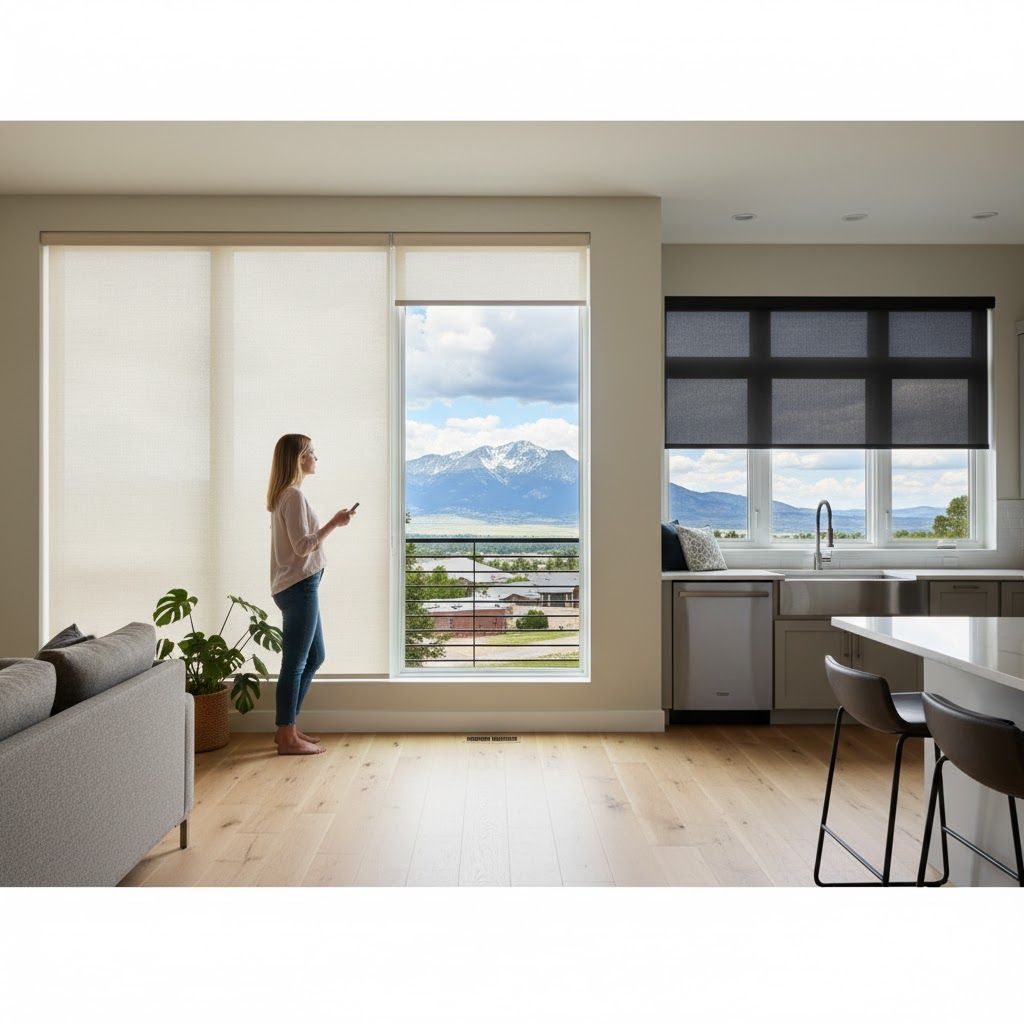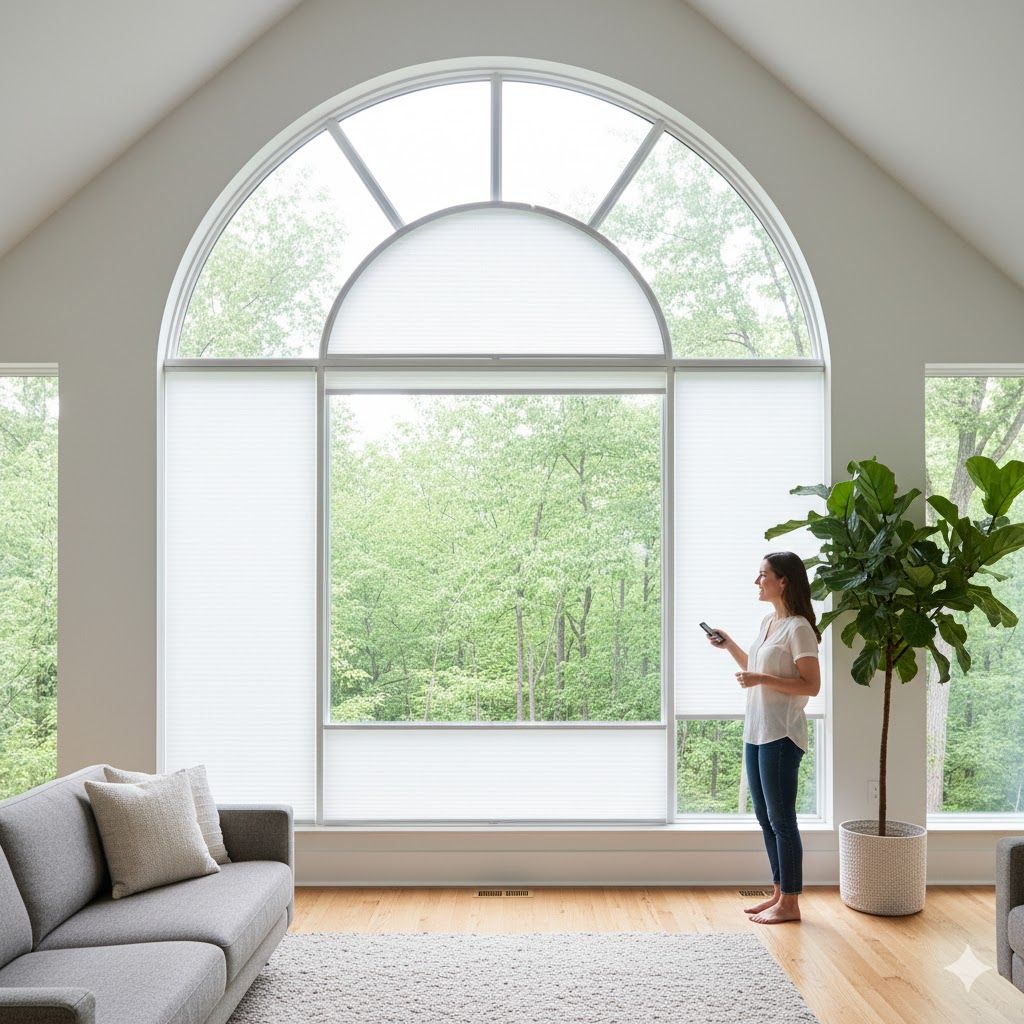How to Choose Window Coverings That Work for All Four Seasons
TLDR;
To choose
window coverings that work year-round, prioritize materials that insulate in winter and reflect heat in summer, like cellular shades or thermal curtains. The best all-season solutions also manage light, enhance energy efficiency, and adapt to Colorado’s distinct climate changes.
Why Seasonal Window Treatments Matter in Colorado
Living in Colorado means preparing your home for both scorching summer sun and frigid winter nights. With over 300 days of sunshine, unpredictable storms, and seasonal temperature swings, the right window treatments aren’t just decorative—they’re essential for comfort, energy savings, and protection. If you're not sure where to start, our seasonal window treatment guide walks you through the best options for staying comfortable and efficient year-round.
Benefits of all-season window coverings:
- Lower heating and cooling costs
- Improved indoor comfort and privacy
- Protection from UV rays and glare
- Year-round style and home value
How Colorado’s Climate Affects Your Window Needs

Colorado’s semi-arid climate brings dry air, high elevation, and big shifts between day and night temperatures. This impacts how heat and light enter your home throughout the year.
Seasonal considerations:
- Summer: High UV index and dry heat make rooms feel like ovens without proper glare and heat control
- Winter: Sub-zero nights and snowstorms cause significant heat loss through windows
- Spring/Fall: Rapid changes in temperature require adaptable window treatments
Did you know?
Denver averages over
245 sunny days per year with a
UV index frequently above 8 in summer. This means year-round sun protection is a must, not a luxury.
Key Criteria for All-Season Window Coverings
Choosing the right treatment starts with knowing what features to prioritize for all-year comfort and efficiency.
1. Insulation (R-Value)
- Look for treatments with high R-values to reduce heat loss in winter and heat gain in summer
- Cellular (Honeycomb) shades trap air in pockets, making them highly insulating
- Thermal curtains with dense fabrics or blackout liners create a heat barrier
2. Light & Glare Control
- Use
solar shades or
dual-layered treatments to filter or block harsh sun without sacrificing views
- Add
blackout liners in bedrooms to block morning light or afternoon glare
- Light-filtering fabrics for common areas maintain natural light while softening UV exposure
3. UV Protection & Fading Prevention
- Opt for
fabrics with UV-blocking coatings to prevent flooring and furniture from fading
- Reflective materials bounce sunlight away in warmer months
4. Energy Efficiency
- Insulating window coverings reduce HVAC usage
- Motorized shades can adjust with the time of day or thermostat to reduce energy waste
- Use
layered treatments to boost thermal performance year-round
5. Privacy & Noise Reduction
- Thicker materials provide better acoustic insulation
- Sheer + opaque combinations let in light without sacrificing privacy
- Great for city homes or busy streets in Colorado suburbs
Best Window Covering Types for All Four Seasons

Cellular (Honeycomb) Shades
- Excellent for insulation with their air-trapping cells
- Work well in both hot and cold seasons
- Available in light-filtering and blackout versions
- Cons: Can look utilitarian in certain room styles
Thermal Curtains & Drapes
- Provide high insulation when lined and weighted
- Easy to layer with sheers or blinds
- Best for bedrooms, living rooms, or drafty areas
- Can be made from natural or synthetic fabrics
Solar & Reflective Shades
- Reduce heat and glare in summer
- Maintain outdoor views while blocking UV
- Best for sun-facing windows or large glass panels
- Less insulation value in winter
Roman & Roller Shades
- Stylish, simple, and adaptable
- Add thermal liners for year-round use
- Come in diverse fabrics for layering
Wood/Faux-Wood Blinds & Shutters
- Insulating due to their density
- Provide excellent privacy and style
- Faux wood is ideal for humidity-prone spaces like bathrooms or kitchens
Layered Treatments
- Combine light-filtering shades with thermal curtains
- Adjust to sunlight and temperature changes throughout the day
- Offers a designer look while being functional
Motorized & Smart Shades
- Automate to adjust with the weather, sun position, or thermostat
- Controlled via remote, app, or smart home systems
- Great for hard-to-reach windows or precise energy control
Mounting & Installation Tips for Maximum Efficiency
Correct installation makes a big difference in energy performance.
Inside vs Outside Mount
- Inside mount: Sleek look but may leave gaps that allow air leaks
- Outside mount: Covers frame and reduces air gaps for better insulation
Other Installation Tips:
- Measure accurately to avoid light leaks
- Use overlapping panels for large windows
- Consider professional installation for custom or motorized treatments
Material & Fabric Choices That Matter

Your choice of material impacts durability, maintenance, and energy performance—especially in Colorado’s intense sun and dry air.
Natural Fabrics
- Cotton, linen, wool: breathable and elegant
- Require liners for insulation or UV protection
- May fade faster without UV coatings
Synthetic Fabrics
- Polyester, acrylic blends: durable and fade-resistant
- Often easier to clean and more budget-friendly
- Ideal for sun-exposed or high-humidity areas
Moisture & UV Considerations
- Use
faux wood in kitchens and bathrooms for moisture resistance
- Choose
UV-treated fabrics for south- or west-facing windows
- Avoid silk or delicate materials in high sun areas
Smart & Sustainable Enhancements
Technology and sustainability go hand-in-hand when selecting all-season window treatments.
Sustainable Upgrades:
- Choose
recyclable materials like aluminum or bamboo
- Buy from manufacturers with eco-conscious certifications
Smart Tech Features:
- Light sensors adjust shades based on brightness
- Thermostat-linked automation reduces HVAC use
- Mobile app control adds convenience and energy management
Room-by-Room Window Covering Ideas

Each room has unique needs, and your coverings should reflect that.
Living Room:
- Use
solar shades + sheers for daytime glare control
- Add
drapes for style and warmth in winter
Bedroom:
- Install
blackout thermal curtains for sleep and insulation
- Layer with sheers for morning light
Kitchen/Bathroom:
- Choose
faux wood or moisture-resistant blinds
- Go for easy-to-clean options
Home Office:
- Motorized solar shades reduce screen glare
- Combine with curtains for Zoom-friendly backgrounds
Your Guide to Year-Round Comfort with Window Treatments
Choosing window coverings that perform through Colorado’s seasons isn’t just about picking something that looks good. It’s about strategically selecting materials, styles, and features that:
- Block heat in summer
- Retain warmth in winter
- Adjust light throughout the year
- Reduce energy bills while adding beauty and value
At Love Is Blinds CO, we specialize in helping homeowners and businesses find the perfect balance of form and function. Whether you're upgrading your living room or fitting out a whole home, we’ll guide you to window treatments that work—every day, every season.
Let your windows work smarter, not harder. Reach out to Love Is Blinds CO to get expert advice on year-round window solutions tailored to Colorado living.

